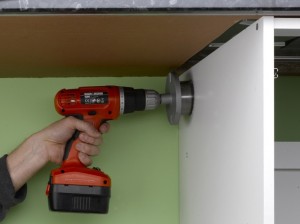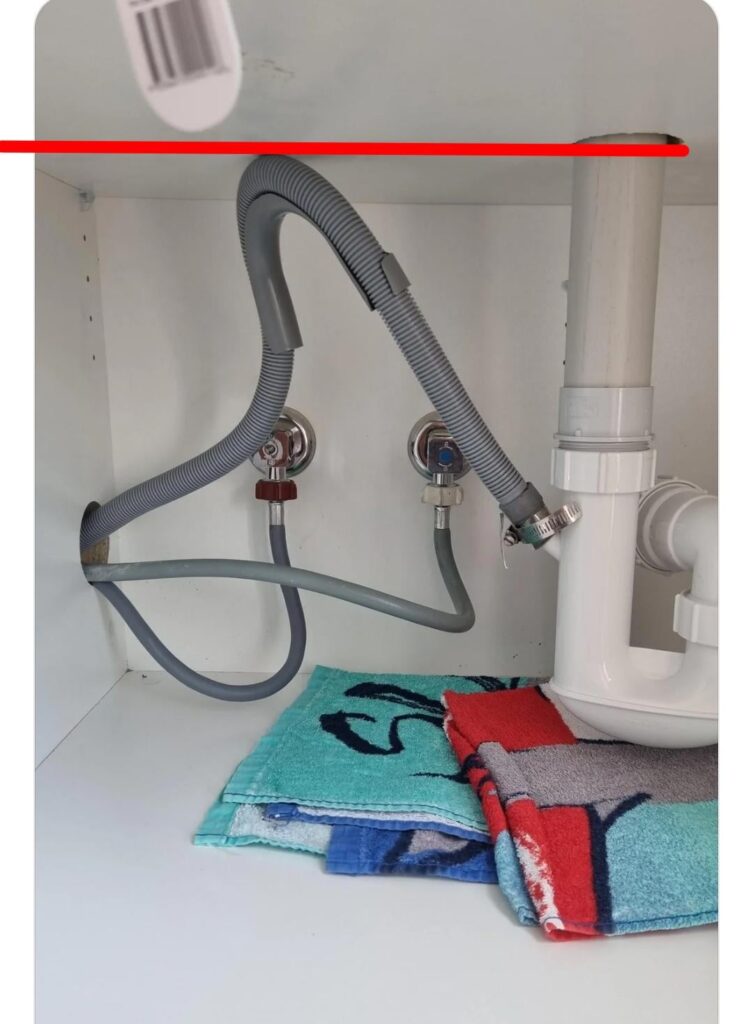To drill a hole for a washing machine drain hose, choose the correct spot. This step is crucial to ensure proper drainage and prevent leaks.
Setting up a washing machine can be tricky, especially when it comes to the drain hose. The location of the hole for the drain hose matters a lot. It affects the efficiency and safety of your laundry setup. A wrong spot might lead to water damage or poor drainage.
This blog will guide you on selecting the best place to drill the hole for your washing machine drain hose. It will cover important factors like height, proximity to the drain, and avoiding obstacles. Let’s make sure your washing machine works perfectly without any issues.
Choosing The Right Location
Finding the best spot for your washing machine drain hose is crucial. It ensures smooth operation and prevents water damage. Proper planning can save you time and frustration. Let’s explore some key factors in choosing the right location.
Considering Proximity To Plumbing
Install the drain hose near existing plumbing. This reduces the need for extra pipes. It also makes connections simpler. Check the distance from the washing machine to the drain pipe. A shorter distance means fewer chances for clogs and leaks.
Avoiding Structural Elements
Avoid drilling near structural elements. Beams, studs, and joists provide support to your home. Damaging them can weaken the structure. Use a stud finder to locate these elements before drilling. Always double-check to avoid costly mistakes.
Credit: www.lg.com
Tools And Materials Needed
Drilling a hole for your washing machine drain hose requires the right tools and materials. Preparing these items ahead of time will ensure the task is done efficiently and safely. Let’s look at the essential tools and recommended materials needed for this project.
Essential Tools
Before you start, gather these essential tools:
- Drill: A powerful electric drill is crucial for creating the hole.
- Drill Bits: Ensure you have the correct size for the hose.
- Measuring Tape: Accurate measurements prevent mistakes.
- Marker: Use a marker to mark the drilling spot.
- Saw: A small saw can help if cutting through thick material.
- Safety Gear: Wear goggles and gloves for protection.
Recommended Materials
These materials will help ensure a smooth installation:
- Drain Hose: A durable, flexible hose is essential.
- Pipe Clamps: These secure the hose in place.
- Sealant: Use sealant to prevent leaks around the hole.
- PVC Pipe: If needed, use PVC pipe for additional support.
- Wall Anchors: These provide extra stability for the hose.
Measuring And Marking The Spot
Before drilling a hole for your washing machine drain hose, you need precision. This step-by-step guide will help you measure and mark the spot correctly. Accurate measurements and clear marks are key to a successful installation.
Taking Accurate Measurements
Start by measuring the diameter of the drain hose. Use a tape measure for this task. Note the diameter on a piece of paper. Next, measure the distance from the washing machine to the wall. Ensure you have enough space for the hose to reach the drain pipe.
Measure twice to be sure. Double-check your measurements to avoid errors. Precision is crucial at this stage.
Marking The Drilling Point
Once you have accurate measurements, mark the spot on the wall. Use a pencil for marking. Ensure the mark is visible and clear. This will guide your drill.
Consider the height of the drain hose. The hole should be at a comfortable height. Usually, 30 inches from the floor works well. Mark this height on the wall.
Place the hose against the wall. Ensure it aligns with the mark. This will confirm the accuracy of your marking.
Drilling The Hole
Drilling a hole for your washing machine drain hose is crucial. It ensures proper water drainage and prevents leaks. Let’s dive into the process, focusing on selecting the right drill bit and drilling techniques.
Selecting The Right Drill Bit
Choosing the right drill bit is essential. First, measure the diameter of your drain hose. Then, select a drill bit slightly larger than the hose. This allows for easy installation and prevents damage. For most hoses, a 1.5-inch bit works well. If the hose is larger, opt for a 2-inch bit.
Consider the material you’ll drill through. Use a wood bit for wooden surfaces. For concrete or brick, a masonry bit is best. Ensure the bit is sharp and in good condition. This makes drilling smoother and quicker.
Drilling Techniques
Start by marking the spot where you’ll drill. Use a pencil or marker. Ensure the spot is at a proper height for drainage. It should be slightly above the washing machine’s drain outlet. This prevents backflow and ensures efficient drainage.
Next, secure the surface if possible. This prevents movement and increases safety. Hold the drill firmly with both hands. Start drilling at a slow speed. This helps maintain control and accuracy. Gradually increase the speed as the bit penetrates deeper. Keep the drill perpendicular to the surface. This ensures a clean and straight hole.
Once through, clean the hole of debris. This ensures a smooth installation for the hose. Insert the hose through the hole and connect it to the drain pipe. Secure it with clamps if necessary.
Installing The Drain Hose
Ensuring your washing machine’s drain hose is correctly installed is crucial. It prevents leaks and ensures efficient drainage. This guide helps you understand the steps to install the drain hose correctly.
Securing The Hose
Begin by securing the hose to the back of the washing machine. Most machines have a dedicated slot or clamp for this purpose. Ensure the hose is firmly attached to prevent any disconnections during operation.
| Step | Description |
|---|---|
| 1 | Locate the hose connection point on the machine. |
| 2 | Insert the hose into the slot or clamp. |
| 3 | Tighten any screws or clamps to secure the hose. |
Connecting To The Drain System
Next, connect the other end of the hose to the drain system. This could be a standpipe, a U-bend, or a sink. The connection point should be at least 24 inches from the floor to ensure proper drainage.
- Ensure the hose forms a swan-neck shape to prevent siphoning.
- Use a hose guide to hold the hose in place.
- Secure the hose with a clamp if necessary.
Double-check all connections to ensure there are no leaks. Run a test cycle to ensure everything works smoothly. Following these steps helps you properly install the drain hose and avoid potential issues.

Credit: www.juliancassell.com
Ensuring Proper Slope
For a washing machine drain hose, the slope is crucial. It ensures water flows properly. Without it, you risk improper drainage. This can lead to leaks and water damage. Below, we explain how to achieve this.
Achieving Correct Angle
The drain hose must be installed at the right angle. A gentle slope works best. Aim for a 1/4 inch drop per foot. This helps water flow smoothly.
| Length (Feet) | Drop (Inches) |
|---|---|
| 1 | 1/4 |
| 2 | 1/2 |
| 3 | 3/4 |
Avoid sharp bends in the hose. These can block water flow. Use a flexible hose for easier installation. Proper angle ensures effective drainage.
Preventing Backflow
Backflow can cause serious issues. To prevent this, use an anti-siphon valve. This device stops water from flowing back into the machine. Install it at the highest point in the hose. This creates a break in the flow path.
- Check the manufacturer’s instructions.
- Ensure a tight fit to avoid leaks.
- Test the valve after installation.
Regularly inspect the hose for wear. Replace it if needed. Preventing backflow protects your home and washing machine.
Testing For Leaks
Once you have installed your washing machine drain hose, it is crucial to ensure there are no leaks. A leak can cause water damage and other issues. Testing for leaks is an essential step in the installation process. Below, we will guide you through two important steps: running a test cycle and inspecting for water leaks.
Running A Test Cycle
Before you test for leaks, ensure the washing machine is properly connected. Turn on the water supply and power. Select a short wash cycle. Running a test cycle helps you check if the drain hose is functioning correctly.
- Load the washing machine with a small amount of laundry.
- Start the washing machine and monitor the process.
- Pay attention to the draining part of the cycle.
If the water drains smoothly without any interruptions, the hose is likely properly installed. If there are issues, it may indicate a need for adjustments.
Inspecting For Water Leaks
After running the test cycle, check all connections for leaks. Inspecting for water leaks ensures there are no hidden issues.
- Examine the area around the drain hose connection.
- Look for any signs of water dripping or pooling.
- Check the back of the washing machine and the wall outlet.
If you notice any leaks, tighten the connections. Use plumber’s tape if necessary. Ensure the hose is securely attached. Regular inspections can prevent future problems and keep your washing machine running smoothly.
Maintenance Tips
Maintaining your washing machine’s drain hose is crucial. Proper maintenance ensures smooth operation and prevents issues. Simple tips can help keep your washing machine in top condition.
Regular Inspections
Check the drain hose regularly. Look for kinks, cracks, or blockages. These issues can cause water to back up. This can lead to leaks or damage. Inspect the hose at least once a month. Early detection prevents bigger problems.
Cleaning The Drain Hose
Clean the drain hose to avoid clogs. Detach the hose from the machine. Use a long brush or rod to remove debris. Flush the hose with water. This ensures it remains clear. Do this every few months.

Credit: www.reddit.com
Frequently Asked Questions
Where Should I Drill The Hole For My Washing Machine Drain Hose?
Drill the hole near the washing machine’s drain outlet. Ideally, it should be 18 to 30 inches off the floor.
What Size Hole Is Needed For A Washing Machine Drain Hose?
A 2-inch diameter hole is typically sufficient. It allows easy insertion and removal of the drain hose.
Can I Drill The Hole In The Floor?
Yes, you can drill the hole in the floor. Ensure it’s near the drain pipe and easily accessible.
Is It Necessary To Use A Hole Saw?
Using a hole saw is recommended. It ensures a clean, precise hole that accommodates the drain hose comfortably.
Conclusion
Finding the right spot for your washing machine drain hose is crucial. It prevents leaks and keeps your laundry area tidy. Make sure to drill the hole in an accessible location. Check for any obstructions behind the wall first. Use the correct tools and follow safety guidelines.
This ensures a smooth installation process. Proper placement can save you from future headaches. With these tips, your washing machine setup will be more efficient. Enjoy hassle-free laundry days!
